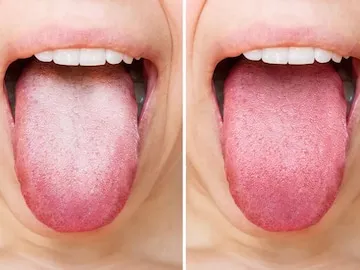What Your Tongue Color Reveals About Your Health

What Your Tongue Color Reveals About Your Health
You Can Find Out Your Problem by Looking at the Color of Your Tongue — Find Out Now!

Examining the tongue is an age-old diagnostic tool used by traditional and modern clinicians alike. The tongue’s color, texture, shape and coating offer clues about your digestive health, circulation, nutrient status and possible infections. Doctors often ask patients to stick out their tongue for a quick health check — here’s what your tongue may be telling you.
How to read your tongue: what’s normal
A healthy tongue is usually light to medium pink, moist, and covered with a thin, barely noticeable coating. Small bumps (papillae) are normal. Any persistent change from this — in color, thickness of coating, size, or surface texture — warrants attention.
1. Changes in tongue color and what they mean
Dark red tongue: May indicate infection, fever, inflammation, or vitamin B deficiencies.
Pale tongue: Often linked to anemia or poor blood/nutrient supply.
Blue or purple tongue: Can signal poor circulation or respiratory / heart issues — seek urgent care if this appears suddenly.
Yellow coating: May point to digestive imbalance, bile/stomach issues, or liver/gallbladder stress.
2. Abnormal coating — thin vs thick, white, yellow or black
A thin, clear film is normal. But different coatings suggest different problems:
- White coating: Could be oral thrush (fungal infection), dehydration, or poor oral hygiene.
- Yellow or greenish coating: May suggest bacterial overgrowth in the mouth or digestive issues.
- Black, hairy tongue: Typically harmless, caused by tobacco, antibiotics, poor brushing, or some medications.
3. Enlarged or swollen tongue (macroglossia)
A swollen tongue can result from allergic reactions, infections, or conditions like hypothyroidism. Persistent swelling, breathing difficulty, or trouble swallowing requires prompt medical evaluation.
4. Tooth marks or scalloped tongue
Grooves or indentations on the tongue edges occur when the tongue presses against the teeth. This scalloped tongue can result from swelling, anxiety-related tongue pressing, or thyroid dysfunction. If new or accompanied by other symptoms, check with a healthcare provider.
5. Red spots, sores or persistent ulcers
Small red patches or painful ulcers may signal inflammation, viral infections, or vitamin deficiencies. Persistent lumps, painful ulcers that won’t heal, or bleeding spots should be examined by a dentist or doctor to rule out infection or other conditions.
Other tongue signs worth noting
- Smooth, glossy tongue: May indicate nutritional deficiencies (B12, iron) or atrophic glossitis.
- Furry or coated tongue after antibiotics: Often follows disruption of normal oral flora.
- Bumpy or geographic tongue: Benign in many people but can sometimes be linked with sensitivities or psoriasis.
When to seek medical advice
See a doctor or dentist if you notice: sudden color changes (blue/purple), persistent white patches, painful ulcers that don’t heal in 2 weeks, unexplained swelling, bleeding, or any symptom accompanied by fever, breathing or swallowing problems. These signs may require blood tests, oral swabs, or imaging to diagnose underlying causes.
Simple steps to keep your tongue healthy
- Brush your tongue gently every morning with a soft toothbrush or use a tongue scraper to remove coating and bacteria.
- Stay hydrated — dry mouth encourages coating and bad breath.
- Maintain good oral hygiene: brush twice daily, floss, and visit the dentist regularly.
- Avoid tobacco and limit alcohol; both can alter tongue appearance and increase cancer risk.
- Eat a balanced diet rich in iron, B vitamins, vitamin C and zinc to prevent deficiency-related tongue changes.
Final thoughts
Your tongue is a simple, visible window into your internal health. While many changes are harmless or temporary, persistent or alarming signs deserve professional attention. Keep an eye on color, coating, size and comfort — and use basic oral care and a nutrient-rich diet to support a healthy tongue and body.
Comment / Reply From
No comments yet. Be the first to comment!







